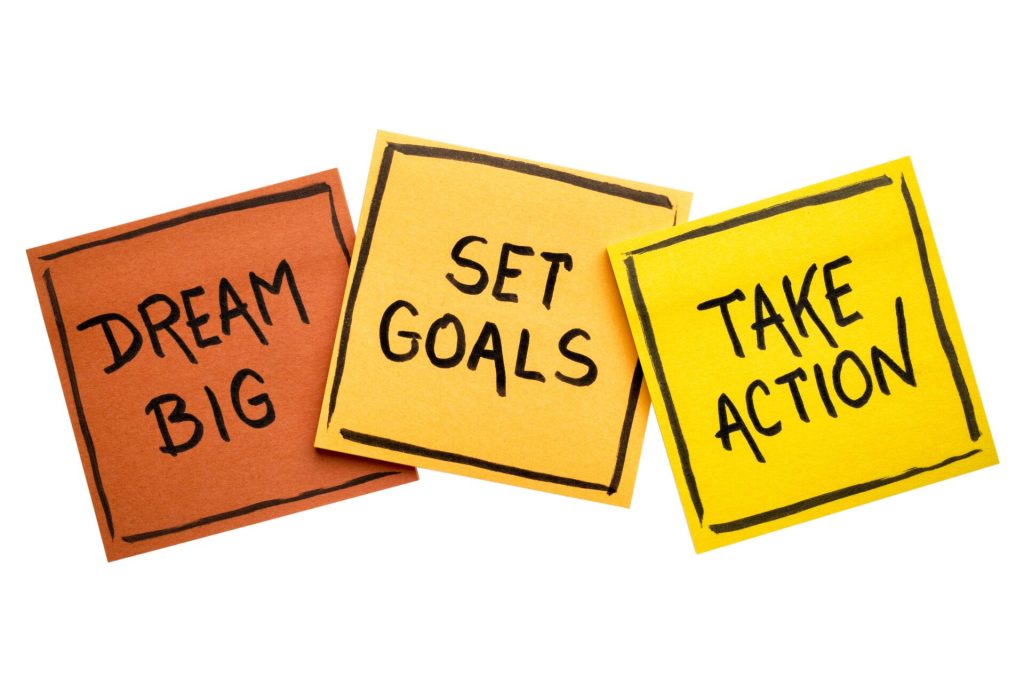
In today’s fast-paced and competitive world, setting goals is crucial for personal and professional growth. However, merely setting goals is not enough; one must also take concrete actions and develop a proactive mindset to become a doer and practitioner. This means actively working towards achieving those goals, consistently applying effort, and adopting effective strategies. In this comprehensive guide, we will explore the essential steps and mindset required to become a doer and practitioner on your journey toward realizing your set goals.
- Clarify Your Goals: The first step towards becoming a doer and practitioner is to have a clear understanding of your goals. Take the time to reflect on what you truly want to achieve and why it matters to you. Set specific, measurable, achievable, relevant, and time-bound (SMART) goals that align with your values and aspirations. By defining your goals clearly, you create a roadmap for action and increase your commitment to making them a reality.
- Cultivate a Growth Mindset: A growth mindset is a fundamental mindset required for becoming a doer and practitioner. Embrace the belief that your abilities and intelligence can be developed through dedication and hard work. View challenges and setbacks as opportunities for growth and learning rather than obstacles. With a growth mindset, you’ll be more resilient in the face of difficulties and willing to put in the necessary effort to achieve your goals.
- Break Down Your Goals into Actionable Steps: To bridge the gap between setting goals and achieving them, it’s essential to break down your goals into smaller, manageable tasks. Create a step-by-step plan that outlines the specific actions you need to take to move closer to your goals. This approach allows you to focus on one task at a time, making the process less overwhelming and more attainable. As you accomplish each task, you build momentum and gain a sense of progress, reinforcing your commitment to your goals.
- Develop Discipline and Consistency: Becoming a doer and practitioner requires discipline and consistency in your actions. Discipline is the ability to stay committed to your goals even when faced with distractions or temptations. Create a routine that incorporates regular actions towards your goals, and make them non-negotiable. Embrace the concept of delayed gratification, understanding that short-term sacrifices can lead to long-term rewards. By developing discipline and maintaining consistency, you build habits that support your progress and increase the likelihood of success.
- Embrace Continuous Learning: To become an effective doer and practitioner, it’s crucial to be open to learning and self-improvement. Seek opportunities to enhance your knowledge and skills related to your goals. Read books, attend workshops, take courses, or seek mentorship from those who have achieved similar goals. Learning expands your horizons, provides fresh perspectives, and equips you with the tools necessary to overcome challenges and make progress towards your goals.
- Take Action and Embrace Failure: Action is the key ingredient in becoming a doer and practitioner. Overcome analysis paralysis and take the first step towards your goals, no matter how small. Procrastination and fear of failure can hinder progress, so it’s important to embrace failure as a natural part of the learning process. Each setback or mistake presents an opportunity to learn, adapt, and refine your approach. Embrace a mindset of experimentation and see failures as stepping stones towards success.
- Seek Accountability and Support: Accountability and support are powerful motivators on your journey towards achieving your goals. Share your goals with trusted friends, family, or mentors who can provide encouragement, guidance, and hold you accountable. Consider joining communities or groups with similar objectives, where you can exchange experiences, seek advice, and gain support from like-minded individuals. Surrounding yourself with positive influences keeps you motivated and focused on your path to success.
- Adapt and Iterate: As you progress towards your goals, be open to adapting and iterating your approach. Sometimes, unforeseen circumstances or new information may require you to adjust your strategies or modify your goals. Flexibility and adaptability are essential traits of successful doers and practitioners. Continuously assess your progress, identify areas for improvement, and refine your plans accordingly. Embrace change as an opportunity for growth and a chance to evolve your goals in alignment with your aspirations.
Becoming a doer and practitioner is a transformative journey that requires commitment, discipline, and a growth mindset. By clarifying your goals, breaking them down into actionable steps, and consistently taking action, you pave the way for success. Embrace failure as a stepping stone to learning, seek support from others, and stay open to continuous learning and adaptation. Remember, you have the power to shape your future and achieve your set goals by embracing a proactive mindset and taking intentional actions towards your aspirations.
